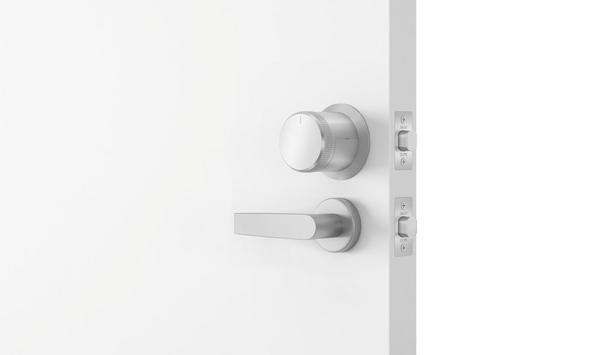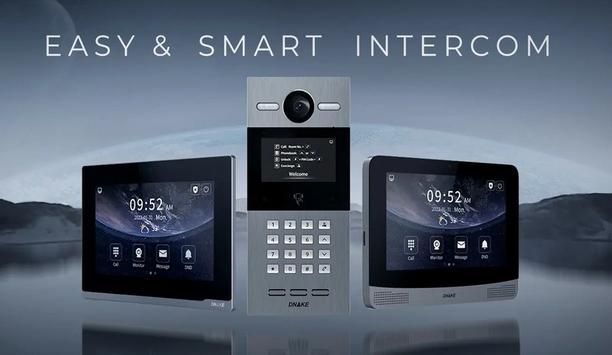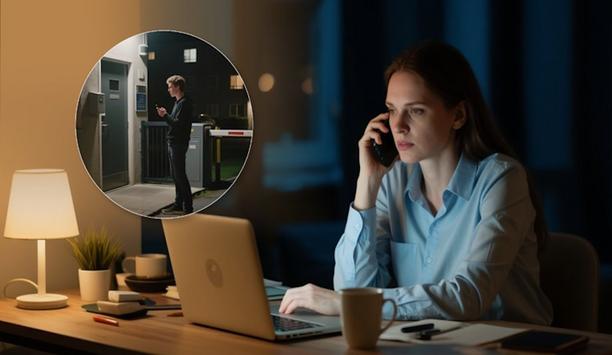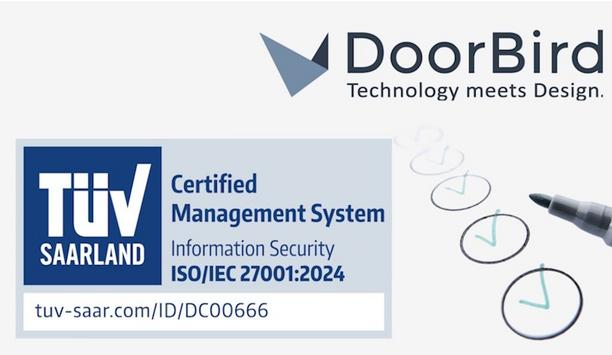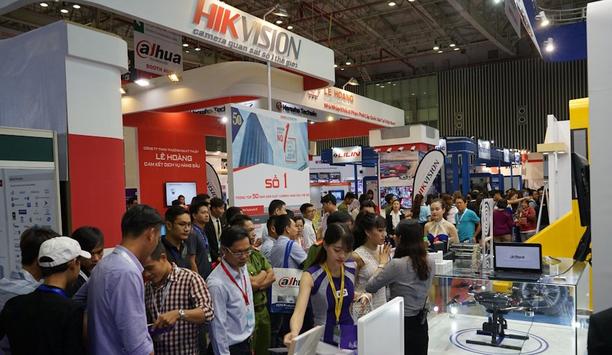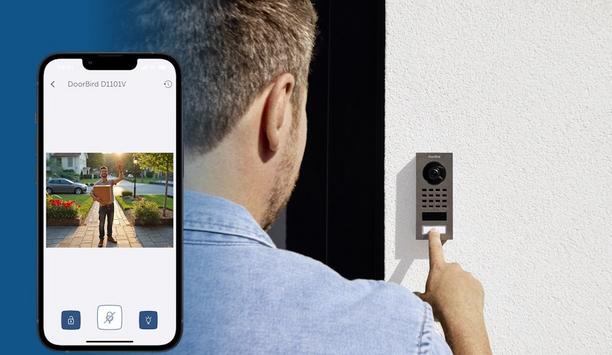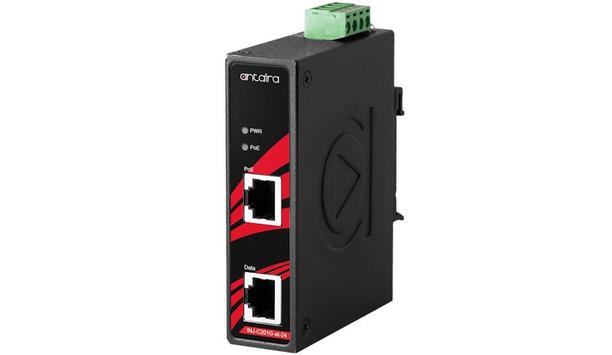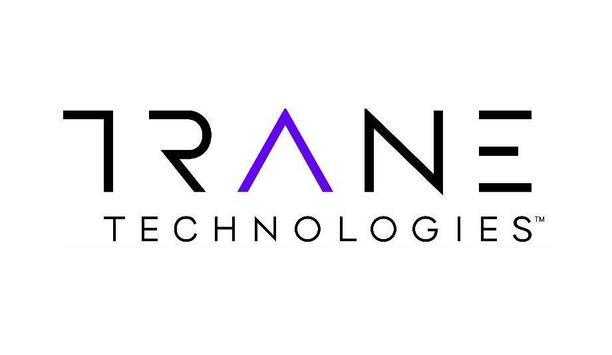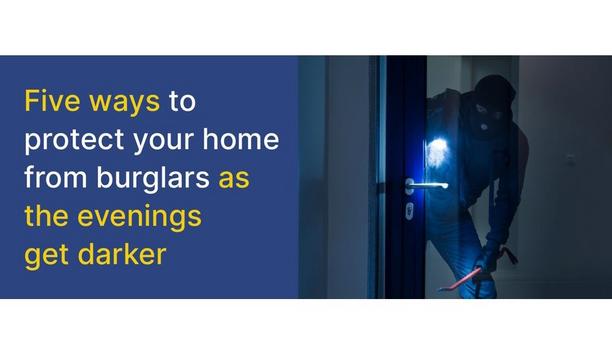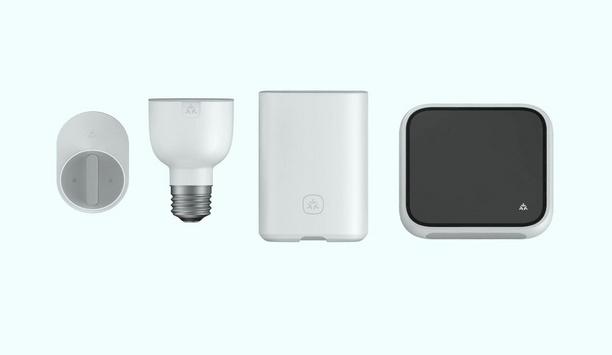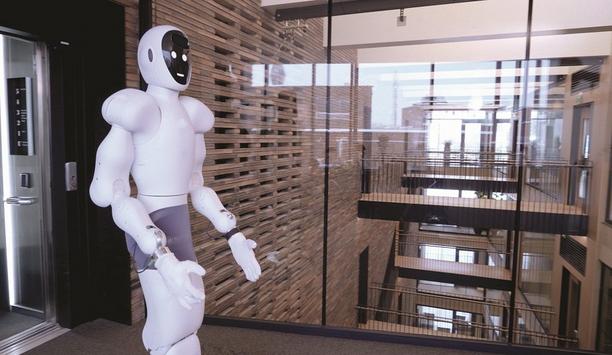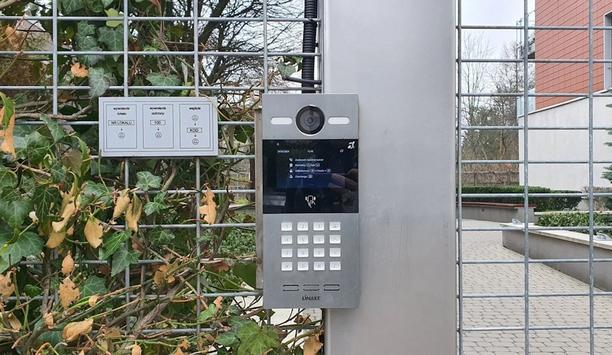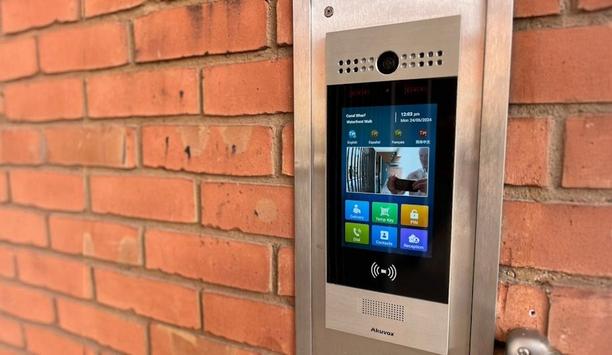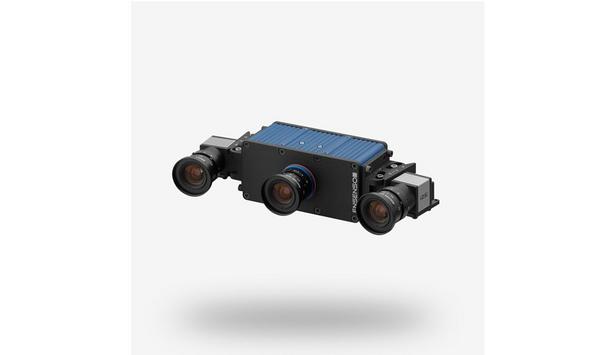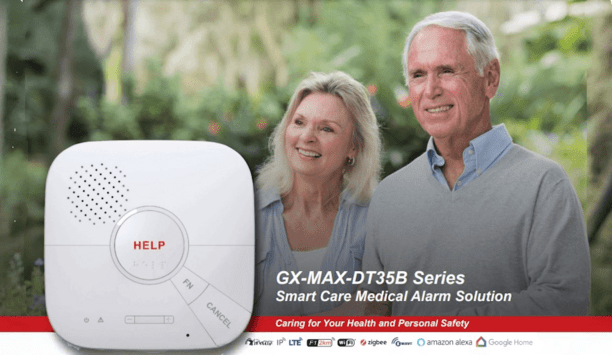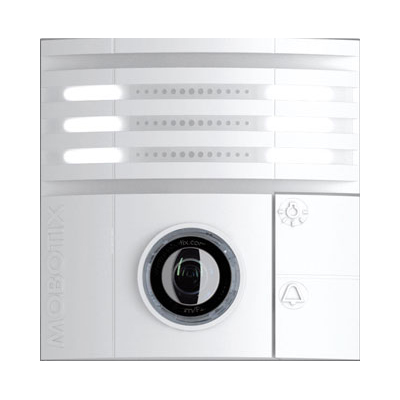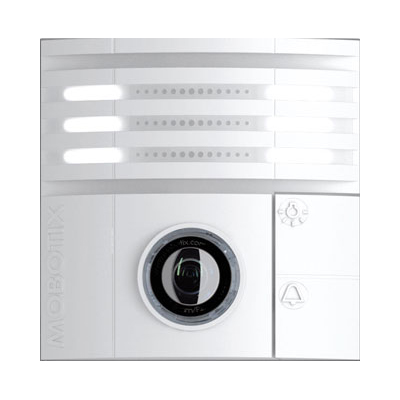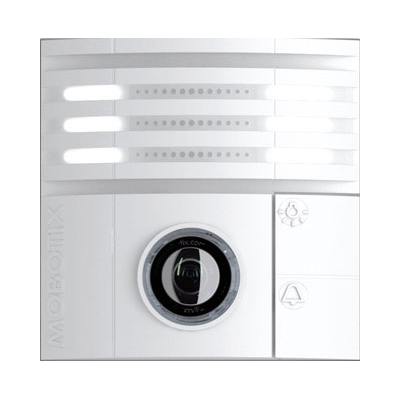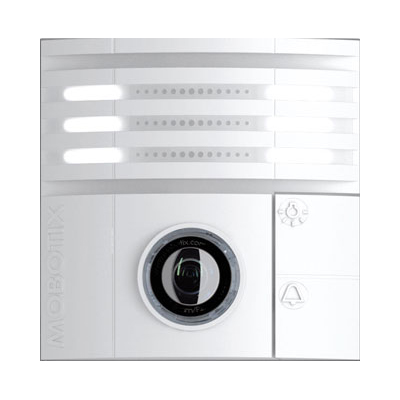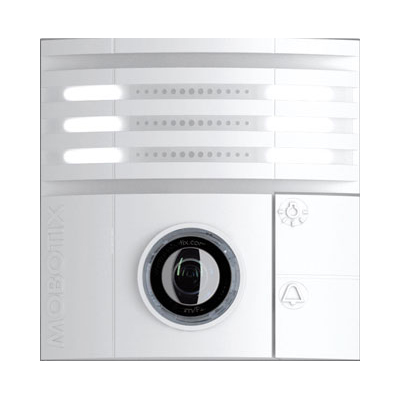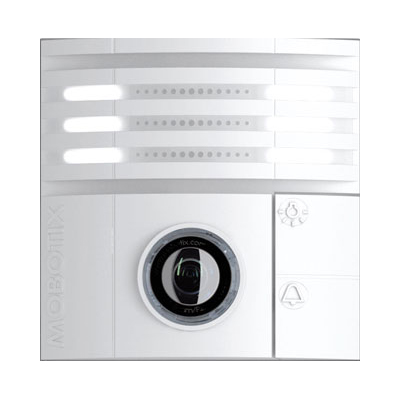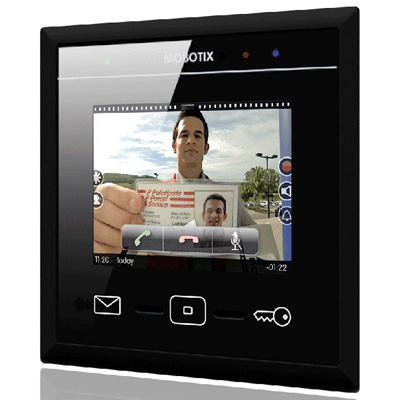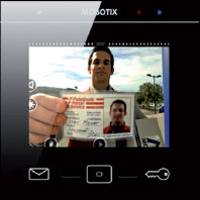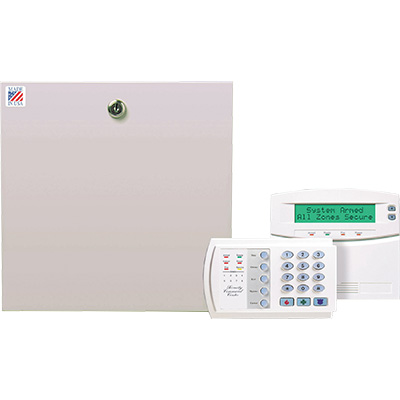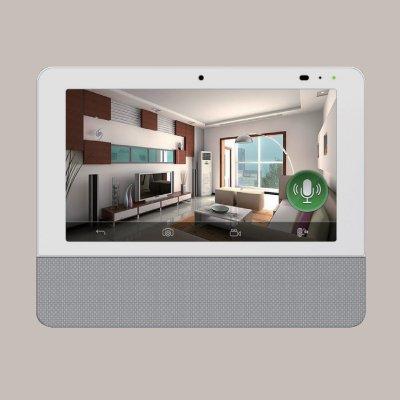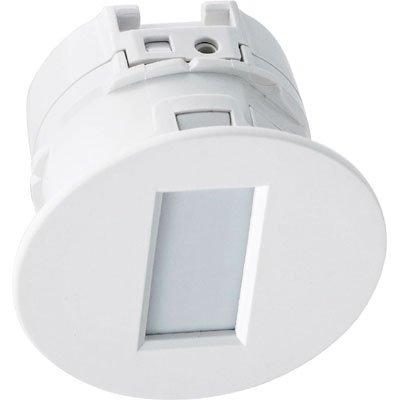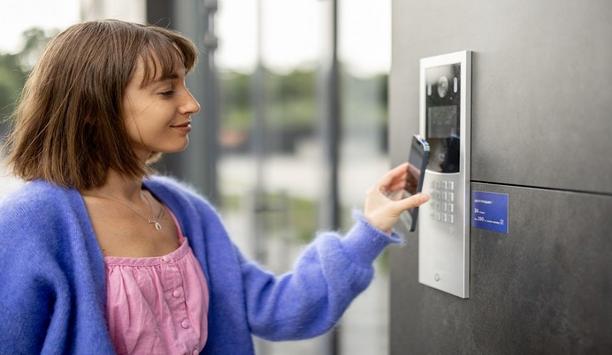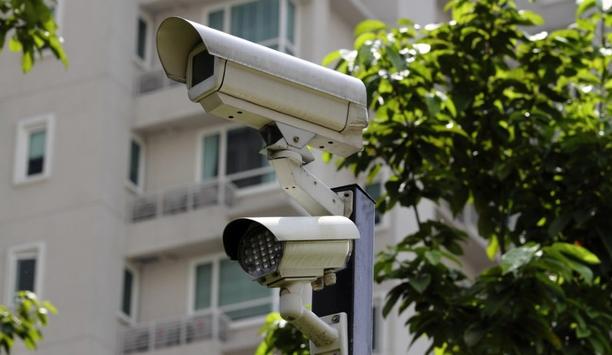Home automation
Salto announces the launch of Salto DLok, the latest residential door smart locking solution. DLok marks a new era in Salto’s smart home innovation. This universal, motorized smart lock connects effortlessly with the Salto Homelok ecosystem to transform the residential access experience for smart homes and apartments, delivering next-level security, convenient keyless access, and automation. The DLok gives residents the power to enjoy a digital, fully automated, and universally compatible...
Alfred International, a pioneer in smart lock solutions, announced that its ML2 Smart Mortise Locks and DB2S Smart Locks with Zigbee have achieved INTEREL certification, enabling seamless integration with the EOS 2 all-in-one thermostat hub for smart building deployments. This certification positions Alfred as a key partner for property management companies seeking cost-effective, scalable access control solutions across multi-family properties. Alfred's commercial-grade Zigbee smart locks Th...
Driven by the rising adoption of IoT-enabled security systems and cloud-based platforms, the global access control market is expected to grow from USD 10.62 billion in 2025 to USD 15.80 billion by 2030, at a CAGR of 8.3%, according to new information from research company, Marketsandmarkets. IoT enhances automation efficiency by enabling secure, real-time data exchange, while cloud integration offers scalability, remote monitoring, and reduced maintenance costs. Together, they support advanced...
DNAKE announced its four cutting-edge and brand-new intercoms that are designed to fulfill all-scenario and smart solutions. The innovative line-up includes door station S215, and indoor monitors E416, E216, and A416, highlighting its leadership in the inspiring technology. Compatibility and interoperability Following the company’s continued investment in R&D and its in-depth understanding of smart life, DNAKE is committed to delivering the best possible products and solutions...
Property managers and residents face mounting challenges in multi-site security management, remote access control, communication gaps, and balancing modern convenience with budget constraints. Cloud-based solutions are revolutionizing how residential properties address these universal pain points. Sarah’s phone buzzed at 2 AM. As the property manager for three residential complexes across different cities, she’d grown accustomed to late-night emergencies. This time, it was a locked-...
Bird Home Automation GmbH has successfully been certified by TÜV Saarland according to the internationally recognized DIN EN ISO/IEC 27001:2024 standard. By completing this comprehensive audit, the company demonstrates that it meets the highest standards in information security and has established an effective Information Security Management System (ISMS). ISO/IEC 27001 is the leading global standard for information security management. It sets the framework for identifying, assessing, and...
News
DNAKE, an industry-renowned and trusted provider of IP video intercom and smart home solutions, and Nestor, a premier distributor specializing in access automation and security, have jointly announced a partnership for distribution in the Benelux market with exclusivity for Belgium and Luxembourg. This collaboration empowers Nestor to distribute DNAKE’s full suite of solutions - including IP video intercom, 2-wire IP intercom and access control systems - to its established network. Together, they will offer smart intercom solutions with future-proof, user-centric features to enhance users’ overall living experience. Latest smart intercom solutions Alex Zhuang, Vice President of DNAKE, said, "We are excited to partner with Nestor Company. Their strong technical expertise and well-established distribution channel will definitely empower DNAKE’s smart intercom products and solutions to reach their channel partners." He adds, "DNAKE’s solutions arrive in these countries at a time of growing investment in cloud technologies, allowing customers in the Benelux region to experience the latest smart intercom solutions with cloud management and remote access." said Alex Zhuang, Vice President of DNAKE. Customers in the Benelux region can look forward to improved access to innovative smart intercom solutions that prioritize security and convenience.
Altech Corporation, a pioneer in industrial automation solutions, announces the release of its ATEX-IECEx approved terminal blocks, which are designed to provide greater safety and reliability in potentially explosive atmospheres. This extensive offering includes multiple connection technologies, providing versatile solutions for diverse industrial applications. Technical features Altech’s ATEX-IECEx-approved terminal blocks are designed for use in ATEX/IECEx The ATEX-IECEx Directive considers both electrical sources of explosion and potentially explosive concentrations of gas, vapor, mist and dust in the air. Altech’s ATEX-IECEx-approved terminal blocks are designed for use in ATEX/IECEx-certified enclosures with a minimum IP54 rating. Key specifications Temperature ranges: Terminal blocks feature a maximum service temperature of 110°C, with an ambient temperature range of −60° to +66°C at mounting position. For some models, the ambient temperature range is −40° to +40°C, with a service temperature range of −40° to +85°C. Insulation material: Polyamide 66, CTI 600/Material Group 1. Wire sizes: Wire sizes range from 24AWG up to 250kcmil, depending on the model. Marking: Altech Terminal Blocks with ATEX-IECEx approval are marked accordingly. For increased safety (“e”): Ex eb IIC Gb. Some are marked Ex ec IIC Gc, signifying robust construction to prevent ignition sources for hazardous gas environments. For intrinsic safety (“i”): Ex ib IIC Gb. Some are also marked Ex ic IIC Gc, indicating the circuit’s electrical and thermal energy is restricted to levels insufficient to cause ignition in an explosive atmosphere. Diverse product offerings Altech’s ATEX-IECEx-approved line includes various terminal block technologies to meet diverse application requirements. Specific products include: CP Series Push-In Terminal Blocks with tool-less connection technology, a stainless steel push-in spring and universal push-in jumper system. CX Series Spring/Cage Clamp Terminal Blocks, featuring a compact design and stainless steel spring. These blocks also utilize the universal push-in jumper system. CY Series Screw Clamp Terminal Blocks with a universal push-in jumper system, strong clamping system and snap-on ground blocks. CT Series Screw Clamp Terminal Blocks, featuring a traditional screw jumper system and large range of block types for various applications. In addition, Altech offers Ring Lug and Stud Terminals for severe vibration and large wire sizes, as well as Panel Mount and Mini Rail Terminal Blocks, which provide compact wiring solutions with both screw and spring/cage clamp technologies.
Against the backdrop of Vietnam’s expanding security, fire safety, and smart building sectors, Secutech Vietnam will return to the Saigon Exhibition and Convention Center (SECC) in Ho Chi Minh City from 14 – 16 August 2025. The 18th edition will span 13,000 sqm, hosting 480 exhibiting brands, presenting the latest solutions driving safer cities and smarter infrastructure. Held with concurrent events Fire & Safety Vietnam and SMABuilding, Secutech Vietnam will spotlight technologies advancing safety, efficiency, and resilience across the country’s urban and industrial sectors. Increasing Demand Driving this demand is a 7.3% year-on-year increase in Foreign Direct Investment (FDI) in Vietnam Driving this demand is a 7.3% year-on-year increase in Foreign Direct Investment (FDI) in Vietnam, reaching over USD 6.7 billion in the first four months of 2025. This influx creates significant opportunities for companies offering security systems, fire protection equipment, and smart building technologies. In addition, the country’s rapid infrastructure development, and its construction sector’s integration of advanced security solutions, further heightens the need for enhanced security measures. Secutech Vietnam provides a targeted networking environment, connecting exhibitors directly with investors, developers, and project managers seeking innovative solutions. Factors driving market growth Ms Regina Tsai, General Manager of Messe Frankfurt (HK) Ltd – Taiwan Branch, elaborated on the factors driving market growth: “The demand for safety and security in Vietnam is on the rise, fueled by market expansion, urbanisation, and government initiatives such as smart city investments and stricter safety regulations.” “These efforts are bolstering urban resilience and creating a significant need for advanced solutions. Testament to the market’s potential, the healthy showing of exhibitors at Secutech Vietnam 2025 are featuring a wide array of technologies, from surveillance cameras, to synergy voice alarm systems, to advanced fire suppression systems.” “This platform serves as a catalyst for international suppliers to connect with Vietnamese businesses eager to enhance their capabilities.” More to showcase at the fair In addition to traditional security systems, the fair will showcase AI-powered surveillance tools, IoT-enabled devices, ICT infrastructure, and technologies for smart city development, industrial automation, and smart building management. Other featured technologies include cybersecurity, access control, smart home automation, and advanced fire prevention systems. Featured pavilions and new zones spotlight industry development Providing suppliers with opportunities to connect with local distributors, integrators, and other market players, the fair’s numerous pavilions and zones reflect global interest in Vietnam’s growing security market. The platform will feature prominent international pavilions from Korea, Japan, and Singapore, as well as the MIT (Made-in-Taiwan) Innovation Pavilion. Complementing these, the fair will introduce dedicated solution zones focused on AI Video Analytics and Facility Access Control – areas experiencing rapid demand driven by the need to safeguard critical infrastructure and optimize operational efficiency. AI Video Analytics: featuring intelligent video surveillance solutions with automated threat detection and real-time alerts to improve situational awareness and response efficiency. Facility Access Control: presenting advanced visitor management systems that secure industrial and critical infrastructure by regulating entry and monitoring personnel movement. Fire safety will also take a prominent role, with two dedicated areas: the Occupational Safety and PPE Zone and the Disaster Prevention Zone, emphasising Vietnam’s commitment to safety in both industrial and urban settings. New fire safety law fuels growth for concurrent shows Vietnam is prioritising fire safety, as demonstrated by the 2024 Law on Fire Prevention, Fighting, and Rescue, mandating stricter requirements for mixed-use buildings and driving investments in the most advanced systems. Set to take effect this July, this law will create significant opportunities for exhibitors at Fire & Safety Vietnam, supported by the Fire and Rescue Police Department, and SMABuilding, both held concurrently with Secutech Vietnam. Conclusion The convergence of these shows allows visitors to efficiently source a wider range of products and services, from fire detection and suppression to integrated security and smart building technologies, all under one roof. The platform addresses the interconnected needs of Vietnam's security, fire safety, and smart building sectors, bringing the market’s newest inventions directly to industry professionals and decision-makers.
Access control is now getting even smarter: Cloud-to-cloud integration between DoorBird and Homematic IP has already been announced and will be released with the 3.5.12 Homematic IP app update. Users will benefit from improved convenience, increased security, and seamless communication right from the Homematic IP app. Homematic IP smart home system The multiple award-winning products are now becoming part of the Homematic IP smart home system DoorBird door stations are pioneering the field of door communication. The multiple award-winning products are now becoming part of the Homematic IP smart home system. The 3.5.12 update for the free Homematic IP app, which will be rolled out gradually from May 27, 2025, allows users to establish a secure cloud-to-cloud connection between their DoorBird video door station and their Homematic IP installation. This makes it all the more convenient and simple to control access to the smart home. Homematic IP door lock drive If a visitor comes to the door and rings the bell, the Homematic IP app will inform the residents by push notification. Then all they have to do is tap to speak to the guest directly: All video and audio signals are transmitted straight to the Homematic IP app. If users then want to let the visitor in, just one more tap will do the trick – simple, fast and secure. As a Homematic IP partner product, the DoorBird video door station can be freely combined with many components of the smart home system, for example, with a Homematic IP door lock drive. DoorBird device's integrated switching relay Free Homematic IP app from version 3.5.12, which will be gradually rolled out to all users from May 27, 2025 They can also use the DoorBird device's integrated switching relay, motion detector, or the doorbell button and the DoorBird device’s access module for intelligent automation as required. The integration is available to all customers with a Homematic IP Access Point, or a Homematic IP Home Control Unit and the free Homematic IP app from version 3.5.12, which will be gradually rolled out to all users from May 27, 2025. All D11 and D21-series DoorBird video door stations are supported. Outstanding security–made in Germany The cloud-to-cloud connection of both systems meets the highest standards of data protection and security. Ralph Bertelt, CEO of eQ-3 AG: "The entire communication between Homematic IP and DoorBird is fully encrypted and complies with the latest security standards, thereby preventing information from falling into the wrong hands." "The Homematic IP Cloud is also hosted exclusively on servers in Germany and is therefore subject to the highest security standards. In 2024, the VDE (Association for Electrical, Electronic & Information Technologies) certified our system in the areas of protocol, IT, and data security for the eighth time in a row.” IP video door stations DoorBird is raising the options that intelligent building automation has to offer with a high-quality key Sascha Keller, CEO of Bird Home Automation GmbH, adds: "As a German manufacturer, quality, data protection and design are a top priority for us, and these are values that we share with Homematic IP." "By integrating our IP video door stations into the Homematic IP system, we are offering our customers a particularly convenient way to combine security and smart home functionality." Intelligent building automation With Homematic IP, DoorBird is expanding the possibilities that intelligent building automation has to offer with a high-quality solution for IP door communication. This integration allows access to be seamlessly connected to smart home controls. Users benefit from increased security, greater convenience, and a fully networked home.
Power over Ethernet (PoE) network switches are frequently used to supply outdoor IP cameras with electricity. Powering IP cameras becomes a challenge, however, when only non-PoE legacy switches are available. Within solar trailers or NEMA-rated pole boxes, operators are left with few power options but connecting batteries or running long cables from wall outlets. Gigabit PoE injector Antaira is introducing at the ISC West its new INJ-C201G-at-24-T industrial Gigabit PoE injector To overcome this obstacle, Antaira is introducing at the International Security Conference & Exposition (ISC West) its new INJ-C201G-at-24-T industrial Gigabit PoE injector, a cost-effective solution to enhance non-PoE legacy switches and routers. It delivers up to 30W of DC power to 802.3af and 802.3at compliant endpoint devices while ensuring high-speed Gigabit data transmission. Integration into network infrastructures Designed for ease of installation, the injector mounts on the same DIN rail as the connected switch within a box or cabinet, eliminating the need for additional AC power lines or replacing a non-PoE switch with a PoE model. Equipped with an internal power booster, the Antaira INJ-C201G-at-24-T supports a wide input range of 12VDC to 55VDC, making it ideal for integration into diverse network infrastructures including industrial automation powered by standard 24VDC control cabinets. Fast and simple to install The injector mixes an intelligent internal tool that ensures power is given only to PoE-compatible devices Installation requires only one Cat6 cable from the non-PoE Ethernet switch or wireless radio to the INJ-C201G-at-24-T injector’s RJ45 input port, and another cable from the injector’s RJ45 output port to the powered device. The 4-pin terminal block connects to an external power source. Designed to IEEE PoE standards, the injector incorporates an intelligent internal mechanism that ensures power is delivered only to PoE-compatible devices, enabling dependable protection. Antaira INJ-C201G-at-24-T The Antaira INJ-C201G-at-24-T is housed in a durable metal casing that can be conveniently mounted on DIN rails or be wall mounted to suit different work environments. It delivers long-lasting, reliable performance where network devices are exposed to vibration, electrical noise, and temperature fluctuations.
The Board of Directors of Trane Technologies plc, a global climate innovator, declared a quarterly dividend of $0.94 per ordinary share, or $3.76 per share annualized. The dividend is payable on June 30, 2025, to shareholders of record as of June 6, 2025. Trane Technologies has paid consecutive quarterly cash dividends on its common shares since 1919 and annual dividends since 1910.


Expert commentary
The autumn equinox, which marks the start of autumn, occurs this weekend on Saturday, September 23. With darker evenings ahead, the experts at ADT have shared five ways to maximize your home's security. Author's quote Michele Bennett, General Manager at ADT UK&I comments: “Opportunistic thieves use darkness to their advantage, so it’s no surprise that the number of burglaries committed increases when the darker nights draw in." He adds, "Our 2022 burglary report found that burglaries are most common at night, with 58% of burglaries occurring between 6 p.m. and 6 a.m. Taking steps to optimize your home’s security before the clocks go back this year will provide reassurance that your property is as secure as possible.” Five ways to secure your property: Get a monitored alarm installed: A visible alarm system is a strong deterrent to potential burglars, as criminals are less likely to target a home that is protected. In the event of a break-in, a monitored alarm will alert you, your keyholders and depending on the package you take out, the police, ensuring a swift response to an alarm activation. Light up the dark: Well-lit exteriors make your home less appealing to potential intruders. Install motion-activated lights around any entry points, particularly porches and gardens, which alert you to movement on your property. This will also prevent burglars from operating under the cloak of darkness and increase the chance of a passerby spotting suspicious activity. Trim your garden landscape: Thieves look for escape routes and hiding spots when deciding which homes to break into, making gardens with high, overgrown hedges more likely to be targeted. This is especially true in the darker evenings, so be sure to give your garden a thorough tidy-up to make your property less likely to be targeted. It’s also advisable to ensure any tools are locked away in sheds and garages that could assist a burglar such as ladders, or a garden spade to force entry. Be smart with your lights: Using smart plugs allows you to turn on a few well-appointed lights and radios or televisions from any location from your phone. Used in conjunction with an outdoor camera or video doorbell, you can have lamps plugged into smart plugs come on when motion is detected. Programming lights to come on at different times throughout the night will help to deter burglars by making your property look occupied. Purchase a smart doorbell or outdoor camera: Smart doorbells are an effective way to deter burglars as they provide evidence in the event of a break-in, package theft, or other suspicious activity around your home. They also notify you when someone is at your door reducing the chance of you being caught out by a late evening or early morning robbery. Further encroachment Smart doorbells also act as a deterrent to unscrupulous door-to-door sellers and con artists, as video footage is recorded. In the event of a late-night door knock, you can see and speak to whoever is at your front door, without having to open the door. ADT’s new outdoor camera also has two-way audio and a high-pitch deterrent siren so you can warn off anyone from your property to deter any further encroachment.
Global transportation networks are becoming increasingly interconnected, with digital systems playing a crucial role in ensuring the smooth operation of ports and supply chains. However, this reliance on technology can also create vulnerabilities, as demonstrated by the recent ransomware attack on Nagoya Port. As Japan's busiest shipping hub, the port's operations were brought to a standstill for two days, highlighting the potential for significant disruption to national economies and supply chains. Transportation sector The attack began with the port's legacy computer system, which handles shipping containers, being knocked offline. This forced the port to halt the handling of shipping containers that arrived at the terminal, effectively disrupting the flow of goods. The incident was a stark reminder of the risks associated with the convergence of information technology (IT) and operational technology (OT) in ports and other critical infrastructures. This is not an isolated incident, but part of a broader trend of escalating cyber threats targeting critical infrastructure. The transportation sector must respond by bolstering its defenses, enhancing its cyber resilience, and proactively countering these threats. The safety and efficiency of our transportation infrastructure, and by extension our global economy, depend on it. Rising threat to port security and supply chains XIoT, from sensors on shipping containers to automatic cranes, are vital to trendy port functions OT, once isolated from networked systems, is now increasingly interconnected. This integration has expanded the attack surface for threat actors. A single breach in a port's OT systems can cause significant disruption, halting the movement of containers and impacting the flow of goods. This is not a hypothetical scenario, but a reality that has been demonstrated in recent cyberattacks on major ports. Adding another layer of complexity is the extended Internet of Things (XIoT), an umbrella term for all cyber-physical systems. XIoT devices, from sensors on shipping containers to automated cranes, are now integral to modern port operations. These devices are delivering safer, more efficient automated vehicles, facilitating geo-fencing for improved logistics, and providing vehicle health data for predictive maintenance. XIoT ecosystem However, the XIoT ecosystem also presents new cybersecurity risks. Each connected device is a potential entry point for cybercriminals, and the interconnected nature of these devices means that an attack on one, which can move laterally and can have a ripple effect throughout the system. The threat landscape is evolving, with cybercriminals becoming more sophisticated and their attacks more damaging with a business continuity focus. The growing interconnectivity between OT and XIoT in port operations and supply chains is also presenting these threat actors with a greater attack surface. Many older OT systems were never designed to be connected in this way and are unlikely to be equipped to deal with modern cyber threats. Furthermore, the increasing digitization of ports and supply chains has led to a surge in the volume of data being generated and processed. This data, if not properly secured, can be a goldmine for cybercriminals. The potential for data breaches adds another dimension to the cybersecurity challenges facing the transportation sector. Role of Cyber Resilience in Protecting Service Availability Cyber resilience refers to organization's ability to prepare for, respond to, and recover from threats As the threats to port security and supply chains become increasingly complex, the concept of cyber resilience takes on a new level of importance. Cyber resilience refers to an organization's ability to prepare for, respond to, and recover from cyber threats. It goes beyond traditional cybersecurity measures, focusing not just on preventing attacks, but also on minimizing the impact of attacks that do occur and ensuring a quick recovery. In the context of port operations and supply chains, cyber resilience is crucial. The interconnected nature of these systems means that a cyberattack can have far-reaching effects, disrupting operations not just at the targeted port, but also at other ports and throughout the supply chain. A resilient system is one that can withstand such an attack and quickly restore normal operations. Port operations and supply chains The growing reliance on OT and the XIoT in port operations and supply chains presents unique challenges for cyber resilience. OT systems control physical processes and are often critical to safety and service availability. A breach in an OT system can have immediate and potentially catastrophic physical consequences. Similarly, XIoT devices are often embedded in critical infrastructure and can be difficult to patch or update, making them vulnerable to attacks. Building cyber resilience in these systems requires a multi-faceted approach. It involves implementing robust security measures, such as strong access controls and network segmentation, to prevent attacks. It also involves continuous monitoring and detection to identify and respond to threats as they occur. But perhaps most importantly, it involves planning and preparation for the inevitable breaches that will occur, ensuring that when they do, the impact is minimized, and normal operations can be quickly restored. Building resilience across port security and supply chains In the face of cyber threats, the transport sector must adopt a complete method of cybersecurity In the face of escalating cyber threats, the transportation sector must adopt a comprehensive approach to cybersecurity. This involves not just implementing robust security measures, but also fostering a culture of cybersecurity awareness and compliance throughout the organization. A key component of a comprehensive cybersecurity strategy is strong access controls. This involves ensuring that only authorized individuals have access to sensitive data and systems. It also involves implementing multi-factor authentication and regularly reviewing and updating access permissions. Strong access controls can prevent unauthorized access to systems and data, reducing the risk of both internal and external threats. Network segmentation Network segmentation is another crucial measure. By dividing a network into separate segments, organizations can limit the spread of a cyberattack within their network. This can prevent an attack on one part of the network from affecting the entire system. Network segmentation also makes it easier to monitor and control the flow of data within the network, further enhancing security. Regular vulnerability assessments and patch management are also essential. Vulnerability assessments involve identifying and evaluating potential security weaknesses in the system, while patch management involves regularly updating and patching software to fix these vulnerabilities. These measures can help organizations stay ahead of cybercriminals and reduce the risk of exploitation. EU’s NIS2 Directive EU’s NIS2 Directive came into effect, and member states have until October 2024 to put it into law The transportation sector must also be prepared for greater legislative responsibility in the near future. The EU’s NIS2 Directive recently came into effect, and member states have until October 2024 to put it into law. The Directive aims to increase the overall level of cyber preparedness by mandating capabilities such as Computer Security Incident Response Teams (CSIRTs). Transport is among the sectors labeled as essential by the bill, meaning it will face a high level of scrutiny. Getting to grips with the complexities of XIoT and OT integration will be essential for organizations to achieve compliance and avoid fines. Global transportation infrastructure Finally, organizations must prepare for the inevitable breaches that will occur. This involves developing an incident response plan that outlines the steps to be taken in the event of a breach. It also involves regularly testing and updating this plan to ensure its effectiveness. A well-prepared organization can respond quickly and effectively to a breach, minimizing its impact and ensuring a quick recovery. In conclusion, mastering transportation cybersecurity requires a comprehensive, proactive approach. It involves implementing robust technical measures, fostering a culture of cybersecurity awareness, and preparing for the inevitable breaches that will occur. By taking these steps, organizations can enhance their cyber resilience, protect their critical operations, and ensure the security of our global transportation infrastructure.
As the cost-of-living crisis intensifies in 2023, owners of construction companies will place a greater emphasis on environmentally-friendly materials, public safety, and strategies to increase value. Physical protection Key events in 2023 will have an impact on the physical protection of people, property, and businesses. King Charles III's coronation in May will be the focus of nationwide large-scale gatherings and celebrations and is already receiving security preparations. Even though this presents a unique security problem for the UK, there are also ongoing circumstances to take into account. As a recession looms and families suffer with the rising cost of living, it is impossible to dismiss the likelihood of economically driven crime, labor discontent, and even civil disturbance. Meanwhile, high-profile, frequently contentious debates about counterterrorism policies continue to be a part of the security landscape. Security services and safety management The year will be challenging due to a lack of labor and materials and an increase in prices The year will also be challenging due to a lack of labor and materials and an increase in prices. Security services and safety management will have difficulties as a result of all these problems in 2023. Here are some themes I believe will emerge in 2023, along with advice on how to properly approach security in your forthcoming builds: Dedication toward sustainability Building industry discussions are increasingly focused on sustainability, and companies of all sizes are under pressure to enhance their sustainability efforts and reduce their carbon footprints. A consultation on the Environmental Audit Committee's (EAC) plan, which has the potential to address the source of 25% of the UK's greenhouse gas emissions, the built environment will be launched by Ministers in 2023. It's critical that procuring more sustainable materials for new construction becomes the standard as a new regulatory framework for net zero in the built environment is developed. Eco-friendly alternatives Look for eco-friendly,sustainable fencing and responsibly sourced gates, and use regulated wood when it comes to perimeter security measures. Any sustainability or responsible sourcing certificates will have a more meaningful context if all these criteria are met first because the best use of the timber has been made, and a product with a long lifespan eventually results in less deforestation. Understanding the connection between value and carbon efficiency Many businesses will ratchet up their perimeter protection to combat the anticipated rise in crime The cost-of-living crisis, which is expected to turn into a recession, is a significant issue that is impacting the UK. Many businesses will ratchet up their perimeter protection to combat the anticipated rise in crime. This may need to be considered while building new commercial properties. Developers might want to take expert advice on fencing for high-value residential structures into account. Fencing and gating solutions There is increasing acknowledgment that choosing lower-quality fencing and gates for perimeter fencing around residential and commercial property projects is less sustainable and potentially more expensive in the long run. This is due to the likelihood of replacements and repairs, which increases waste. Construction companies and professional builders will carefully consider the lifetime cost of fencing and gating solutions in 2023 as the recession bites, looking beyond upfront product expenditures to find the best value and lowest long-term carbon effect. The guarantee's duration is important. Environmental preservation Environmental preservation is important on construction sites as well. There are many benefits to developers implementing measures like hedgehog-friendly security fencing. When it comes to security and protecting hedgehogs, vertical bar fencing checks all the right boxes. Since the fencing features pale spacing which conforms to anti-trap regulations, hedgehogs have more than enough room to pass between the pales to the other side. Public safety during significant events in 2023 Be prepared for new legal restrictions designed to safeguard the public Professional builders should think about temporary and long-term security solutions for commercial properties during major events like King Charles' coronation in May. Any temporary solutions must be strong enough to endure big crowds. Be prepared for new legal restrictions designed to safeguard the public. Martyn's Law anti-terror Protect Duty The Martyn's Law anti-terror Protect Duty, which advanced in the legislative process in December, will have draft legislation set to be published in the spring of 2023. There is little doubt that this will significantly alter the building sector as well as how public areas, venues, and the people who use them are safeguarded. Security measures There is currently, except for select sporting venues and public transportation, no mandate that anyone takes any effort to prevent such incidents, including establishing security measures like HVM (Hostile Vehicle Mitigation) barriers, having an action plan, or providing training. This is going to change, though, in light of the suicide attack at the Manchester Arena in 2017, which claimed the lives of 23 people who had just left an Ariana Grande concert. Adopting new rules The government is also attempting to adopt new rules that will make it an offense not to take preventative measures or know what to do should an assault occur, as a result of a campaign by Figen Murray, whose son Martyn died in the incident. An obligation to protect is introduced by the Protect Duty. Behavioral and physical controls Building contractors hired to ensure that new builds are safe should add physical safeguards like fences, bollards, CCTV It's crucial to think of security as a blend of behavioral and physical controls. Building contractors hired to ensure that new builds are safe should think about adding physical safeguards like fences, bollards, CCTV, and blast-resistant glass. The owner of the property must undoubtedly think about establishing and sustaining a security-conscious culture. It is insufficient to select a security product such as fencing, bollards, or CCTV and hope for the best. Guidelines A fence and gate system that complies with other safety requirements, such as fire rules and health and safety codes, will be recommended by responsible construction companies. To be ready and prepared to comply with this significant new obligation as the year goes on, I would advise organizations and chosen construction partners to use the data and guidelines made available by the government and police agencies.
Security beat
Matter is a new open-source interoperability standard that will simplify the connectivity of smart home systems, including security. The growing popularity of the Matter 1.0 standard was evident at the large Consumer Electronics Show (CES) in January in Las Vegas, where the standard was heavily promoted by companies including Google, Amazon, and Samsung. A flood of Matter-connected products is on the horizon for ship dates in the second half of 2023. Evolve, and manage IoT standards Creating the standard is the Connectivity Standards Alliance (CSA), formerly the Zigbee Alliance, which changed its name in May 2021. With 300 companies as members, CSA seeks to create, evolve, and manage Internet of Things (IoT) technology standards through a well-established, collaborative process. CSA promotes the benefits of global, open standards, and the value of the IoT to customers and consumers, and seeks to break down the barriers to broad access and adoption of IoT technologies and solutions. Matter The new brand name Matter was launched in May 2021 to designate the standard formerly known as Project CHIP (Connected Home over IP), developed by CSA member companies including Apple, Google, Samsung, and Amazon. There are currently 800 devices and apps certified to the new smart home standard, including various smart home equipment (except video cameras, which will be included in a major release in the fall of 2023). Matter version 1.0 was initial launch in October 2022. Matter 1.0 release Twice a year moving forward, Matter plans a minor release each spring and a major release each fall As part of the Matter 1.0 release, authorized test labs are open for product certification, the test harnesses and tools are available, and the open-source reference design software development kit (SDK) is complete, thus enabling new products to be brought to market. Twice a year moving forward, Matter plans updated releases, a minor release each spring and a major release each fall. Smart home interoperability Currently, a variety of CSA working groups are addressing various aspects of interoperability in the smart home, including issues such as data privacy, security, energy management, and health and wellness, says Christopher LaPré, CSA’s Head of Technology. “Implementing elements requires that the standards alliance be able to multitask on several tracks,” says LaPré. Some development is centering around connectivity and the need for a “hub” to which multiple systems can communicate and incorporate an “identity” to regulate the availability of information to various systems. The standards will enable both do-it-yourself (DIY) systems and devices deployed by professional installers. Addressing privacy requirements The new development will be guided by what installers need to succeed in the home automation" Ecosystems depend on the availability of some type of “identity” to meet privacy requirements. Rules must be implemented across the ecosystem that deploys a “trust system” to ensure privacy. Solving the challenge involves getting all the major players to the table at the technical level to meet the bar from the business and technology perspective. “Integrators and retailers will play a role as Matter continues to evolve,” says LaPré. “New development will be guided by what installers need to succeed in the home automation market.” Matter-certified devices There is still work to be done to expand the 800 certified devices to function throughout the Matter ecosystem and to add new devices over time. One goal is to simplify an integrator’s solution using fewer hubs (and possibly a single hub) to provide a wide variety of services. The timeline of adding new Matter-certified devices may be delayed by the availability of equipment in the global supply chain, says LaPré. Flexibility Multi-admin provides for the simultaneous operation of devices in multiple smart home systems A multi-admin feature of Matter enables more flexibility for multiple ecosystems. A core feature of Matter, multi-admin provides for the simultaneous operation of devices in multiple smart home systems. Accordingly, family or household members could operate the device with the digital assistant or smartphone app of their choice. A bridging protocol helps to tie existing systems together. Amazon, Apple, Comcast, Google, SmartThings, and the Connectivity Standards Alliance came together in 2019 to develop and promote this new standard, joined by fellow Alliance board member companies IKEA, Legrand, NXP Semiconductors, Resideo, Schneider Electric, Signify, Silicon Labs, Somfy and Wulian. Smart device communication Currently, member organizations span all sizes, across a range of business categories. More than 1,700 Member individuals participate in bringing the Matter specification, reference implementations, testing tools, and certification programs to life. Matter's underlying network technologies are Wi-Fi and Thread. Wi-Fi enables Matter devices to interact over a high-bandwidth local network and allows smart home devices to communicate with the cloud. Thread provides a mesh network within the home. Both the Wi-Fi Alliance and Thread Group partnered with the Connectivity Standards Alliance to help realize the vision of Matter.
New robots and indoor drones for security applications are on the horizon, based on the work of ADT Commercials’ Innovation Lab, which is evaluating the new technologies’ value to customers and some typical use cases. The Innovation Lab has been in place for just under a year and just moved into a 2,000-square-foot facility that is staffed with four dedicated ADT Commercial employees and teams from various commercial innovation partners. The idea of the lab is to close the gap between the incubation of new technologies and the needs and realities of the ultimate customer. The goal is to adapt the design of a product to meet the customer’s need, instead of forcing the customer to adapt their use of the technology to meet its limitations. Addressing a problem Every project or investment at the innovation lab starts with the identification of the problem, never the solution" "Every project or investment at the innovation lab starts with the identification of the problem, never the solution," says Ed Bacco, Vice President, Enterprise Security Risk Group for ADT Commercial. “Then we develop detailed functional requirements to address what this technology needs to do to address the problem.” “Then – and only then – do we move toward developing the technical specifications to answer how the technology needs to operate to address the problem,” he adds. Prioritizing innovation The approach sets ADT Commercial apart from most labs. The last item they focus on is the creation of a business model to address how they can sell the technology. “Early on, the company recognized that if we truly want to focus on innovation, we need to prioritize invention over profits, which is why the lab doesn’t operate under a profit-and-loss model,” says Bacco. This article will describe two recent technologies the Innovation Lab has been working with, and how they can impact the future of the security industry. Halodi Humanoid Robotics Unlike other competitive robot solutions, Halodi Humanoid Robotics can interact with the built environment The ideal use of humanoid robots is to perform jobs that are considered repetitive, dirty, dangerous, and/or mundane. In security, that describes most security guard positions. Unlike some other competitive robot solutions, Halodi Humanoid Robotics can interact with the built environment, meaning that they can autonomously open doors, call elevators, present security badges, operate pins pads, and more. Observe and report functionality The basic use case for the bot is based on the fact that the role of 98% of all security guards is to “observe and report.” There is often a misconception in the public that guards are widely permitted to engage hands-on with alleged offenders, but most guarding contracts restrict that ability. Therefore, given the mundane and routine nature of guarding, humans find it a challenge to maintain the high degree of awareness that is needed, whereas the bots never waiver, never rest and never lose awareness. Alternative to human guards If a bot is to serve as an alternative to human guards, then it needs to interact with the human environment The bot wasn’t designed to be “human-like.” There is a general concept in humanoid robotics called the “uncanny valley” that defines a tipping point when humans become uncomfortable with humanoid robots if their design resembles humans too closely. However, if a bot is to serve as an alternative to human guards, then it needs to be capable of interacting with an environment that was designed for humans. That means opening doors, riding elevators, bending down, picking up items, etc. Remotely operated Current robotic devices are skilled at sensing/analyzing the environments they are deployed in, but their ability to interact with them is limited. The other advantage of a humanoid robot is when it’s being remotely operated in the avatar mode, meaning virtually, the human operator finds the experience familiar and intuitively knows what to do. Access, intrusion, and VMS integration The bots can be integrated with access control, intrusion, and video management systems and can conduct patrols autonomously and report anomalies, and/or respond to alarms via those same systems. The bots can be equipped with other sensors to constantly analyze the environment for threats to human life such as carbon monoxide, smoke, hazardous chemicals, or poor air quality. IR capabilities IR capabilities also enable the bot to detect the possible failing or overheating of equipment They are capable of “seeing” in the Infrared Range (IR), which makes them suitable for responding to the source of fire/smoke alarms while humans evacuate. IR capabilities also enable the bot to detect the possible failing or overheating of equipment. Although designed to operate autonomously, the bot can also be controlled by a simple point-and-click mapping device or using the avatar control system. Applications “The biggest challenge we’ve seen with customers who are conducting in-field pilots is aligning their excitement of how the bots can improve their traditionally non-security applications with the current capabilities,” says Bacco. These applications include using the bots to conduct safety audits of items like fire extinguishers and Automated External Defibrillators (AEDs), serving as a fire watch, greeting visitors in the lobby, and automating gates at industrial and distribution sites. Autonomous Indoor Drones COVID-19 has shown that customers are looking for predictable and repeatable solutions to meet their security needs" As the name implies, autonomous indoor drones are focused on flying indoors versus the outdoor environment, which is heavily regulated by the U.S. Federal Aviation Administration (FAA). Flying autonomously indoors not only eliminates FAA oversight but also will enable ADT Commercial to offer another choice to customers to further reduce their dependencies on and costs of human guards. “The COVID-19 pandemic has shown that customers are looking for predictable and repeatable solutions to meet their security needs that aren’t dependent on humans,” says Bacco. The three use cases for the drones are automated alarm response, random tours, and directed missions. Automated response mode In the automated response mode, when an alarm is triggered, the drone will automatically initiate a mission to the point of alarm and report any anomalies (i.e., people, heat signature, etc.). It can also be programmed to fly random patrols as a deterrent to a possible breach, and an operator can remotely initiate a mission using a simple point-and-click map interface. Drone mobility An obvious comparison is to fixed camera systems, which are an important component of any security system. But, unlike a fixed device, the mobility of a drone enables a view of an environment that is more easily understood by humans, meaning that we think and see in 3D, whereas fixed views are limited to 2D. Added to that, there is a deterrence factor that a mobile surveillance device has over a fixed. Noise consideration and applications Customers want to fly drones 24/7 in minimally manned locations such as data centers, warehouses The drone is designed to operate in environments that are being shared with humans. As an example, it will not initiate a mission if a person is standing under it, and it will autonomously alter course if a person is in its flight path. However, like all drones, the noise factor is a consideration, and the best applications in offices are after hours. Customers want to fly them 24/7 in more minimally manned locations such as data centers, warehouses, and manufacturing facilities, where noise is less a factor. Stand-alone and integrated system An indoor drone can be operated as a stand-alone system with its user interface, or it can be integrated fully with traditional security and VMS systems. “We are also developing additional computer vision-based analytics that will leverage the cameras on the drone,” says Bacco.
Mergers and acquisitions are among the most disruptive forces in the security marketplace. However, they are also both a reality and a growing trend. Whenever there is value to be leveraged, companies tend to enter into business transactions to maximize that value. For the security industry, the result is a continually shifting collection of manufacturer companies seeking new ways to provide value to customers. M&A activity continued unabated in 2021, despite residual industry challenges such as dysfunctional supply chains and lingering consequences of a global pandemic. Here are some of the larger and/or most impactful M&A transactions of 2021. Stanley Black & Decker sells to Securitas Stanley Black & Decker announces an agreement to sell most of its Security assets to Securitas AB for $3.2 billion in cash. The transaction includes Stanley Black & Decker's Commercial Electronic and Healthcare Security business lines. The businesses carry 2021 forecasted revenues of approximately $1.7 billion. “The business is well-positioned for ongoing growth within Securitas, a global pioneer in the security industry,” says James M. Loree, Stanley Black & Decker's CEO. Openpath’s solution makes businesses more secure with multi-factor authentication Motorola acquires Openpath and Envysion Motorola Solutions adds to its security industry portfolio with the acquisition of Openpath Security Inc.., a cloud-based mobile access control provider. Openpath’s solution makes businesses more secure with multi-factor authentication, enables a contactless entry experience, and can be easily scaled and managed due to its cloud-based architecture. Motorola also announces the acquisition of Envysion, a provider of video security and business analytics solutions for quick-service restaurant and retail industries. Delta Electronics buys March Networks Delta Group, a provider of power and thermal management solutions, purchased 100% of the shares in Infinova (Canada) Ltd., owner of Canadian-based video surveillance and business intelligence company March Networks, from Infinova International Ltd. through its subsidiary Delta International Holding Limited B.V. Following the close of the transaction, it was expected that March Networks will continue to operate from its Canadian headquarters, and the March Networks executive management team will continue to lead the organization. Delta Electronics is also the parent company of VIVOTEK. APi Group acquires Chubb Fire and Security Business APi Group Corp. acquire the Chubb Fire & Security Business from Carrier Global Corporation for an enterprise value of US$ 3.1 billion. Headquartered in the United Kingdom, Chubb has approximately 13,000 employees globally and a sales and service network that spans 17 countries, serving more than 1.5 million customer sites in Europe, Asia Pacific, and Canada. APi Group is a business services provider of safety, specialty, and industrial services in more than 200 locations worldwide. Teledyne Technologies Inc. will acquire FLIR in a cash and stock transaction valued at approximately $8.0 billion Teledyne acquires FLIR Teledyne Technologies Inc. and FLIR Systems, Inc. jointly announced that they have entered into a definitive agreement under which Teledyne will acquire FLIR in a cash and stock transaction valued at approximately $8.0 billion. Jim Cannon, President and Chief Executive Officer of FLIR, said, “We could not be more excited to join forces with Teledyne through this value-creating transaction.” Resideo adds Norfolk Wire and Electronics Resideo Technologies, Inc. acquired privately held Norfolk Wire & Electronics, based in Richmond, Virginia. Norfolk was founded in 1985 and is a regional distributor of security, telecom, network, and audio-video (AV) related products, supplies, and tools. With 11 full-service retail locations and a 43,000 sq. ft. distribution center, Norfolk serves customers across the mid-Atlantic region and will be part of Resideo's ADI Global Distribution business, a wholesale distributor of security, AV, and low-voltage products. Triton acquires ACRE, which acquires Feenics and Matrix Triton Partners acquired ACRE, an end-to-end security solutions provider based in Dallas/USA and Dublin/Ireland. Triton is investing alongside the current management team of ACRE. Weeks later, ACRE acquired cloud-based workplace solutions company Time Data Security (TDS). Later in the year, ACRE announced acquisition of Feenics and Matrix Systems. Feenics brings cloud-based access control solutions brings cloud-based access control solutions to ACRE’s rapidly growing network of global customers while also expanding its portfolio to support the growing demand for cloud-based security solutions. Matrix enables ACRE to expand the addressable market for the company’s technology portfolio. Brivo, Inc. and Crown PropTech Acquisitions have entered into an agreement making Brivo a publicly listed company Brivo becomes publicly traded through the merger Brivo, Inc., a cloud-based access control and smart building technologies company, and Crown PropTech Acquisitions, a publicly traded special purpose acquisition company (SPAC), have entered into a definitive merger agreement that will result in Brivo becoming a publicly listed company. The transaction values the company at a pro forma enterprise value of $808 million. Upon closing, the combined company will operate as Brivo, and its Class A common stock is expected to be listed under the ticker symbol “BRVS.” Nice buys Nortek Security Nice, a global manufacturer of smart home, security, home, and building automation solutions, , acquired Nortek Security & Control from Melrose Industries. Nortek Security & Control is a developer of technology for security, home automation, control, power, AV and entertainment, access control, health, and Artificial Intelligence (AI) systems, for residential and commercial markets. Eagle Eye acquires Uncanny Vision Eagle Eye Networks, a cloud video surveillance solutions company, has acquired Uncanny Vision Solutions, an artificial intelligence (AI) analytics and Solutions Company. The acquisition accelerates the company’s leadership in providing AI and analytics, to make customers’ businesses more efficient and the world a safer place. The acquisition also includes research and development (R&D) capabilities and a new regional office located in Bangalore, India.
Case studies
Located in the picturesque region of Zlatar, Serbia, Star Hill Apartments is a popular tourist destination that combines modern living with a serene natural environment. To ensure the safety and comfort of its residents and visitors, the apartments have been equipped with DNAKE's advanced smart intercom solutions. The solution Star Hill Apartments sought a modern, secure, and user-friendly communication system to streamline access control, enhance security, and improve overall resident satisfaction. With a blend of tourism and residential living, it was crucial to integrate a solution that would serve both long-term residents and temporary guests without compromising safety or ease of use. DNAKE smart intercom solution The DNAKE S617 8” Facial Recognition Android Door Station allows for seamless visitor identification DNAKE smart intercom solution which ensures both residents and visitors enjoy seamless, secure, and high-tech living experiences, perfectly match its requirements. The DNAKE S617 8” Facial Recognition Android Door Station allows for seamless visitor identification, eliminating the need for physical keys or access cards while ensuring that only authorized individuals can enter the building. Inside the apartments, the A416 7” Android 10 Indoor Monitor provides residents with a user-friendly interface for controlling various functions, such as door entry, video calls, and home security features. Additionally, the Smart Pro App enhances the experience further, allowing residents to remotely control their intercom system and providing temporary access keys (such as QR codes) to visitors for scheduled entry dates. Installed products S617 8” Facial Recognition Android Door Station Smart Pro APP A416 7” Android 10 Indoor Monitor Solution benefits By integrating DNAKE’s smart intercom solutions, Star Hill Apartments has elevated its security and communication systems to meet the demands of modern living. Residents and visitors now enjoy: Enhanced Security: Contactless access through facial recognition and real-time video communication ensures only authorized individuals can enter the building. Convenience: The Smart Pro App allows residents to control their intercom system from anywhere and provides easy and smart entry solution for visitors through temporary keys and QR codes. User-Friendly Experience: The A416 indoor monitor offers an intuitive interface for seamless communication and control within the apartments.
A housing estate, built in 2008, features outdated 2-wire wiring. It consists of two buildings, each with 48 apartments. There is one entrance to the housing estate and one entrance to each building. The previous intercom system was relatively old and unstable, with frequent component failures. Consequently, there is a strong need for a reliable and future-proof IP intercom solution. Solution Highlights: Easy Intercom Retrofitting with Existing Cables Good Scalability for Easy Addition of New Units or Expansion Remote Access with App-based Features Solution Benefits: Future-proofing: With DNAKE 2-wire IP intercom solution, residences can now enjoy high-quality audio and video communication, multiple access options, including remote access, and the integration with surveillance systems, providing a more versatile and secured living experience. Cost Efficiency: By using existing 2-wire cables, the need for new cabling is minimized, reducing both material and labor costs. DNAKE 2-wire IP intercom solution is more budget-friendly compared to systems that require extensive new wiring. Simplified Installation: The use of existing wiring simplifies the installation process, reducing the time and complexity involved. This can lead to faster project completion and less disruption to residents or occupants. Scalability: DNAKE 2-wire IP intercom solutions are scalable, allowing for easy addition of new units or expansion as needed, making it adaptable to changing requirements.
Holliday Wharf & Canal Wharf in Central Birmingham is a bustling apartment complex of 143 properties and home to 400 residents. The development is located in a region that has experienced rapid growth and redevelopment, with a surge in new bars and restaurants opening, and new student accommodation also housed in the area. Safety of residents The management group perceived the growth complex was facing rising security concerns With the recent influx of nightlife, hospitality outlets, and a growing student population, the management company perceived the development complex was facing increasing security concerns. James Clayton, Chair of Holliday Wharf Management, emphasized the legal responsibility to ensure the safety of residents. "With the influx of people into the area, it was imperative that we prioritize our residents' security," he said. "We needed a system that would not only protect them but would also enhance their living experience." System requirements The security challenges included incidents of unauthorized access, coupled with increasing concerns about package theft and personal safety, all of which highlighted the need for a more robust access control solution. Wharf Management determined that a comprehensive overhaul of the access control system was imperative to protect residents and their assets. Existing security infrastructure In reply to crises, the firm sought the expertise of Urban Stream to set a tailored safety plan In response to these concerns, the company sought the expertise of Urban Stream, a specialist security installer, to develop a tailored security strategy and install a new system. Dale Taylor, of Urban Stream, explains, “The Wharf Management team identified several pain points within their existing security infrastructure. Our goal was to develop a comprehensive solution that would not only resolve these issues but also exceed their expectations.” The solution Working in partnership with the CIE system design team, Urban Stream implemented a full Akuvox access control and door intercom system. This state-of-the-art system replaced traditional key fobs and pin readers with advanced facial recognition technology. Residents now enjoy seamless access to the building and car park through the power of biometric access credentials. The Akuvox system provides a robust door entry and resident intercom system that encompasses a bespoke-built database management and analytics reporting system, ensuring comprehensive control over access permissions and live reporting. Facial recognition technology Residents have expressed their satisfaction with the increased security and ease of use By eliminating the vulnerabilities associated with physical keys and PIN codes, the system significantly enhances security while offering unparalleled convenience to residents. The positive impact of the new system is evident. Residents have expressed their satisfaction with the increased security and ease of use. The advanced facial recognition technology has added a layer of sophistication to the complex, elevating its appeal and value to potential buyers and tenants. Products At the heart of the Holiday Wharf/Canal Wharf security upgrade is the Akuvox access control system. This comprehensive solution features a range of advanced products and ‘smart intercom’ products designed to provide maximum security and convenience. Central to the system is the facial recognition access credentials featured within the Akuvox R29C and E16 smart door intercoms, a state-of-the-art access credential technology that accurately identifies residents and authorized personnel. By capturing and analyzing facial features, the system grants or denies access with speed and precision. Akuvox touchscreen answering panel The system has a vital database control system, ruling to efficient control over access licenses Furthermore, each of the 140+ apartments features an Akuvox touchscreen answering panel which not only provides high-definition audio/video communication with visitors requesting access but also allows individual residents to integrate these touchscreen panels with any smart-home automation platforms they may be using within their apartment. The system also includes a robust database management system, allowing for efficient control over access permissions. This feature enables property management to easily manage resident information, grant access privileges, and monitor system activity. Integration of the Akuvox system The integration of the Akuvox system with the apartment complex’s existing infrastructure ensures seamless operation. The system works in harmony with other building management systems, providing a unified approach to security and property management. By leveraging the power of facial recognition and advanced database management, the Akuvox system delivers a superior level of security and live analytical reporting without compromising convenience for residents. Results and benefits Locals have embraced the new system madly, praising its comfort and efficiency The implementation of the Akuvox access control system at Holiday/Canal Wharf development has yielded impressive results. The most significant benefit is a substantial enhancement in security. By replacing traditional, less secure methods with advanced facial recognition technology, the complex has effectively eliminated the risk of unauthorized access. Residents have embraced the new system enthusiastically, praising its convenience and efficiency. The ability to access the building and car park effortlessly using facial recognition has significantly improved residents' quality of life. Effectiveness of the Akuvox system Moreover, the increased security has had a positive impact on property values. Potential buyers and tenants are increasingly drawn to properties that offer state-of-the-art security features. The Akuvox system has positioned Holiday Wharf as a pioneer in apartment complex security, attracting attention from across the region. The success of this project has not gone unnoticed. Holiday Wharf has received numerous inquiries from other property management companies interested in implementing similar systems. This growing interest is a testament to the effectiveness of the Akuvox system and CIE-Group's expertise in delivering cutting-edge security solutions.
RODE, the acronym for RObotic DEpalletiser, is a pioneering product from AWL in the intralogistics market. The robotic solution can efficiently process packages randomly arranged on a pallet, setting it apart from conventional systems. Need for increased automation According to the German Parcel and Express Logistics Association (Bundesverband Paket und Expresslogistik e. V.), 4.15 billion courier, express, and parcel shipments were sent in Germany alone in 2022. Annual shipment growth to around 4.9 billion is realistic by 2027. Against this backdrop and the generally prevailing shortage of personnel, there is only one solution for shipping and logistics companies to cope with this immense volume of orders: increased automation. RODE The global robotic integrator AWL offers RODE, an intelligent robotic depalletiser solution The global robotic integrator AWL offers RODE, an intelligent robotic depalletiser solution. One of the locations where RODE adds value is for DHL eCommerce in Rotterdam. In this machine, two Ensenso 3D cameras from IDS Imaging Development Systems GmbH are implemented to provide the required image data. Application The intelligent robot-supported depalletiser, therefore, automatically destacks any packaged goods such as cartons, bags, or containers from pallets and thus ensures their continuous processing - without delays or downtime. Even "extra shifts" at peak times can be implemented at any time, e.g., to cope with the increased workload during Christmas. This frees up staff for more qualified tasks, such as the subsequent processing of consignments or handling customer inquiries. At the same time, it relieves employees of physically and ergonomically demanding tasks and reduces the risk of injury. Up to 800 packages in continuous operation The particular difficulty here lies in the robot's picking of parcels of different sizes and weights At DHL eCommerce in Rotterdam, RODE processes up to 800 parcels per hour with a maximum weight of 31.5 kg each and places them on the corresponding sorting belt. The particular difficulty here lies in the robot's picking of parcels of different sizes and weights. It must independently recognize the position of the objects in three-dimensional space and decide which package to pick next. It then has to determine the best gripping position and avoid collision with other parcels or the machine. Ensenso X36 3D cameras "This intelligent robotic solution integrates AI image processing and high-tech gripper technology," explains Sander Lensen, R&D Manager at AWL. "The system recognizes products and can flip the items to ensure that the required long side is leading." Two Ensenso X36 3D cameras provide the necessary image data. Integrated image processing system They can provide robust 2D and 3D information on products on a pallet measuring 1200 x 1200 mm They can provide robust 2D and 3D information on products on a pallet measuring 1200 x 1200 mm and a maximum height of 2400 mm. The integrated image processing system processes this further and enables the depalletizer to identify each package and determine the corresponding gripping position for robust robot-assisted picking. 3D cameras for future-oriented robotics Each Ensenso X36 3D camera system consists of a projector unit and two GigE cameras with either 1.6 MP or 5 MP CMOS sensors. AWL has opted for the 5 MP variant for its solution. Mounting and adjustment brackets, three lenses as well as sync and patch cables for connecting the cameras to the projector unit are also included in the scope of delivery. The integrated FlexView2 technology ensures an even better spatial resolution as well as a very high robustness of the system with dark or reflective surfaces. Easy to set up It is also easy to integrate into its working environment and aims to give its users a competitive edge The 3D systems are delivered assembled and pre-calibrated. However, focussing and calibration are also easy to set up using the setup wizard integrated into the software. The latter they have in common with the RODE depalletiser - it is also easy to integrate into its working environment and aims to give its users a competitive edge in the world of logistics automation. Outlook "The intralogistics market is a growth market. The number of robot solutions required will increase rapidly in the coming years." "The type of products that need to be recognized will change constantly. This will be a challenge for all components and the demands on the camera," explains Sander Lensen. Camera technology with artificial intelligence However, image processing is also developing rapidly. Smart solutions that combine camera technology with artificial intelligence are on the rise. They hold great potential for tackling both increasingly demanding tasks and the worsening shortage of skilled workers. Carton by carton, parcel by parcel, pallet by pallet.
GX-MAX-DT35B Smart Care Medical Alarm comes with a brand-new case design. The battery level and the cellular signal strength will be indicated through the white bar on the top cover. The system supports VoLTE (voice over LTE), offering better quality of voice communication and calling experience. In addition, the current status of the system, for example, in learning mode or alarm reporting, will be also indicated through the LED backlight of the large Help button. Users can always be informed of the system status and have peace of mind. GX-MAX-DT35B GX-MAX-DT35B Smart Care Medical Alarm is an all-in-one wellness and personal safety medical alarm solution GX-MAX-DT35B can be compatible with Bluetooth medical devices, like blood glucose/blood pressure monitors, pulse oximeters, etc., to track medical data and remote monitoring directly from caregivers/physicians; and also has telecare alarm features, including emergency monitoring, inactivity monitoring, voice control, and home automation capabilities to assist seniors to have a more secure, healthy living. GX-MAX-DT35B Smart Care Medical Alarm is an all-in-one wellness, and personal safety medical alarm solution, bridging medical health monitoring and emergency alarms to keep seniors safe in their own homes. Functions Bluetooth Medical Device Pairing GX-MAX-DT35B is compatible with BluetoothMedical devices, like blood pressure/blood glucose monitors, pulse oximeters, thermometers, etc., to track health and medical data and allow caregivers/physicians to remotely monitor and provide treatment as needed. Wi-Fi Hotspot GX-MAX-DT35B can serve as a Wi-Fi hotspot, allowing users’ computers, smartphones, or other devices to connect and access the Wi-Finetwork. Smart Home Automation ZigBee, Z-Wave, or Bluetooth automation devices are incorporated into GX-MAX-DT35Bcreates a smarter and safer home, by autotuning on hallway lights at night to decrease the chance of a fall; or auto turn on the heater if there’s a sudden temperature drop. Location Tracking GX-MAX-DT35B can be paired with the BRPD-1 Bluetooth pendant, a small wearable panic button that partners with a smartphone application for GPS location reporting and triggers a help alarm with one button press, whether the user is at home or out for a walk. Connected for Healthier, Secure Living Voice Control GX-MAX-DT35B is compatible with Google Home and Amazon Alexa voice control to control home electronic devices, allowing seniors to use their voice to make their environment more suitable without lifting a finger. Pivotell ® Advance Automatic Pill Dispenser GX-MAX-DT35B is compatible with Pivotell ®Advance Automatic Pill Dispenser, keeping secure of all pills, reminding users to take their medication, keeping track of their medicine intake, and allowing caregiver/physician to monitor pill-taking results/records, and keeping an eye on user needs. Voice over Internet Protocol (VoIP) &DECT GX-MAX-DT35B’s built-in VOIP function allows users to initiate two-way voice calls to contact CMS and family members during alarms and emergencies. With a built-in DECT module (forGX-MAX5/8 models) or plug-in EX-1 DECT module (for GX-MAX15/18 models), GX-MAX-DT35B can pair with voice extenders, talking pendants, call points, etc., placed around the home to create a safety net and peace of mind. Visual Monitoring and Verification GX-MAX-DT35B can integrate Camera PIR Motion Sensors to deliver real-time visual monitoring and verification. When an emergency occurs, alerts are immediately sent to family members, and the Monitoring Center to verify the event and send immediate assistance as needed. Safety & Inactivity Monitoring GX-MAX-DT35B can support wireless sensor devices, allowing users to add in smoke detectors, water leakage sensors, and gas sensors to monitor emergencies; and motion sensors, door contacts, sensor pad transmitters for inactivity monitoring, to build a healthier, safer independent living. Features Communication Path Options: IP (Ethernet), LTE. Support for VoLTE (Voice Over LTE). Built-in Module: RF (for all models), DECT (for GX-MAX5/8 models). Optional DECT Module (for GX-MAX15/18 models). Protocol Module Options: Zigbee, Z-Wave, Bluetooth. Wi-Fi hotspot capability. Support external antenna capability (GX-DT35B-EX only). Able to support multiple Communication protocols with Monitoring Centers for Alarm Reporting. Compatible with Bluetooth (BLE) medical devices. Voice over Internet Protocol (VoIP) capabilities. World-class certified RF range, reliability, and performance. Supports Pivotell ® ‘Advance’ Pill Dispenser integration. ZigBee or Z-Wave compatible home automation features. Compatible with Amazon Alexa & Google Home voice control. 24/7 Environment Safety Monitoring. Energy Management Capabilities. Voice Prompt feature alerts the user upon designated events and status. Comprehensive help/nurse arrival function. Multi-color of the Help button backlight to indicate the current status of the system. Multi-party emergency intercom system capability. Supports multiple programming methods. Automatic check-in reports. Remote firmware update capabilities.
Country Court, a respected care home provider in London, has recently completed the opening of its latest and flagship care home, Camberwell Lodge, in collaboration with Jacksons Fencing. Nestled in the heart of Southwark, London, this partnership represents a significant milestone in combining state-of-the-art security measures with sophisticated living spaces within the care sector. A sanctuary of security and style As the newest jewel in Country Court’s crown, Camberwell Lodge expands the organization's impressive portfolio, now counting over 35 residential care and nursing homes across the UK. The facility, embodying Country Court’s ethos ‘our family, caring for yours,’ is not just a care home but a beacon of community and warmth, accommodating up to 98 residents. It offers a diverse range of services including nursing, residential, respite, and specialized dementia care. Raising the standard of safety Central to ensuring the security and safety of residents and the aesthetic appeal of Camberwell Lodge is Jacksons Fencing’s installation of 154 meters of Barbican Imperial vertical bar railings. These railings, standing proudly at 1.8 meters high, blend robust security with sleek design, demonstrating that safety and style can go hand in hand. 25-year guarantee The railings are hot dip galvanized and polyester powder-coated black, ensuring long-lasting durability and a finish that complements the lodge’s contemporary architecture. Each railing comes with the assurance of Jacksons Fencing’s 25-year guarantee, symbolizing a commitment to quality and trust. Elegance at the Entry Further enhancing Camberwell Lodge’s secure yet elegant ambiance, Jacksons Fencing also installed an automated, 3-meter-wide sliding gate adorned with a matching Barbican Imperial infill. This gate serves as a secure yet inviting and accessible entrance and parking area for staff, residents, and visitors, embodying the blend of robust security and aesthetic appeal. Its vertical bar design, employing a welded pale-through-rail construction, not only deters climbing and vandalism but also adds a touch of sophistication to the facility’s overall appearance. Coexistence of security and elegance Reflecting on this successful project, Peter Jackson, Managing Director at Jacksons Fencing, expressed, “We are immensely proud to have partnered with Country Court in the development of Camberwell Lodge, a project that not only enhances their remarkable portfolio, but also stands as a beacon of how security and elegance can coexist harmoniously to benefit the care sector." He adds, "A care home is more than just a facility; it’s a community space that needs to feel safe, welcoming, and comfortable, and we’re delighted to have played a role in bringing this vision to life and blending robust security with sleek design.”


Products


Round table discussion
Driving the smart homes market is the convenience of simple technology solutions. Almost every home now has a “smart speaker” that makes it easier than ever for homeowners to interface and control their technology. But where does security fit into the new landscape of smart home systems? We asked this week’s Expert Panel Roundtable: What’s new in smart homes and residential security systems?
The role of the integrator/installer in the physical security marketplace is shifting as technologies evolve and applications expand. Integrators are being faced with a need to augment their expertise both in a wider range of systems and deeper into the specifics of each increasingly complex technology. At the end of the day, it falls to the integrator/installer to ensure a system performs as promised, however much a consultant or even a manufacturer might be involved in the process. We asked this week’s Expert Panel Roundtable: How is the role of the security installer/integrator changing?
As the first line of defense against unauthorized access to business premises, perimeter security can alert an enterprise of potential security threats while delaying or preventing any loss or damage due to criminal acts. Combining hardware and software, perimeter security addresses the outermost ring of a facility’s concentric circles of protection. Obviously, any threat addressed at the outermost edge of defense does not become a more immediate and urgent threat closer to a facility. We asked this week’s Expert Panel Roundtable: What’s new in perimeter security systems?
